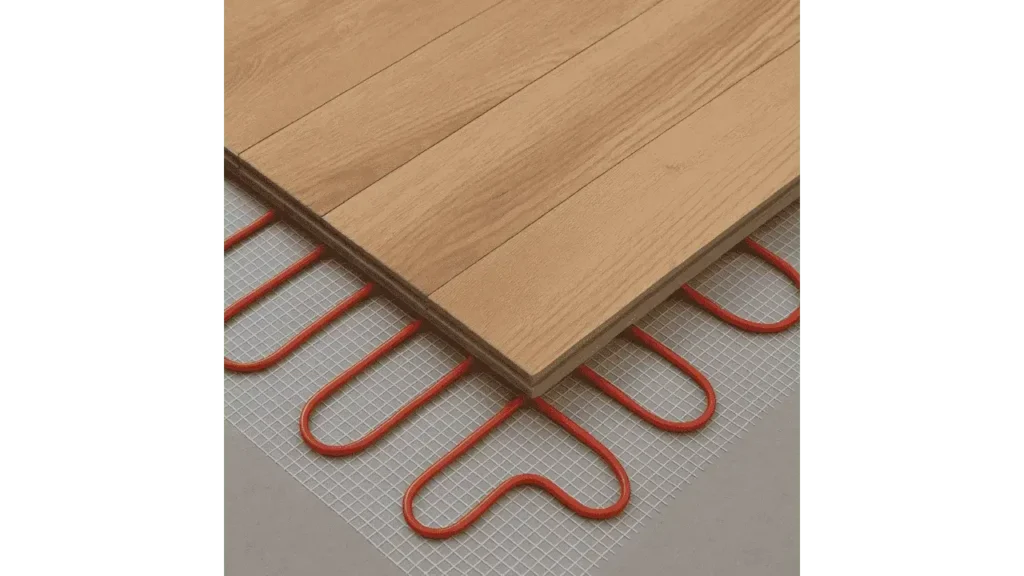I’ve worked with quite a few homeowners who wanted the classic warmth of wood floors but also the consistent comfort that radiant heating provides. The truth is, it’s not just doable but also smart. But it has to be done right. Not all wood handles heat the same way, and unless you choose the right material and follow proper installation steps, problems like cupping, cracking, or gaps can show up sooner than expected. With years of experience installing flooring over radiant systems, I’ve seen firsthand how good planning and the right wood can make this combination both beautiful and efficient.

Why Does Radiant Heat Work Well Under Wood Flooring?
Radiant systems deliver heat evenly from the ground up, offering a consistent indoor temperature and eliminating cold spots. Because it warms the floor surface directly, it reduces the need for forced-air systems that stir up dust or allergens. When combined with wood, radiant heat enhances both the visual comfort and actual warmth of a room.
“Radiant heating can be a great match for hardwood flooring, provided you work with stable materials and follow guidelines closely,” says Eric Lockhart, a licensed flooring contractor with over 20 years in high-end residential installations.
Important Considerations Before Installation
Moisture Management Is Crucial
Wood is a natural material that expands and contracts with changes in humidity and temperature. If moisture isn’t controlled, it can lead to cupping, gapping, or warping. The subfloor must be dry, insulated, and properly prepared to prevent condensation.
Heat Settings Must Be Gradual
Sudden temperature changes can shock the wood. Radiant systems should be brought up to temperature gradually, especially during initial startup or seasonal changes.
Read More: How to Touch Up Wood Floors?
Best Wood Species for Radiant Heat
Not all woods react the same way to heat. Stable, dense woods tend to perform best. Among the top choices are oak, which offers excellent dimensional stability and resists warping; maple, known for its smooth grain and strength, though slightly more reactive to humidity; cherry, valued for its rich color and good thermal response; and hickory, which is highly durable with strong heat tolerance. Softer species like pine should be avoided, as they are more prone to movement and surface damage.
Best Wood Cuts for Stability
The way the wood is cut affects how it handles temperature shifts. Quarter-sawn flooring is cut at a 60°–90° angle to the grain, minimizing expansion. Rift-sawn flooring offers a straight, consistent grain for superior stability. Plain-sawn flooring, though common, is more prone to movement due to broader grain patterns. Quarter-sawn or rift-sawn options are typically recommended over radiant heat due to their reduced reactivity.
Best Flooring Structure for Radiant Heat
Engineered hardwood is the preferred choice for use with radiant heat. Its layered construction helps resist expansion and contraction better than solid hardwood. If solid hardwood is selected, it should be properly acclimated and installed according to both manufacturer and radiant system specifications.
Final Thoughts
Pairing radiant heating with wood floors can be a smart upgrade, one that balances visual appeal with long-term practicality. From my experience, choosing engineered hardwood with a stable grain cut like quarter- or rift-sawn makes all the difference. Combine that with steady heat regulation and solid moisture control, and you’ll have a floor that’s not only comfortable to walk on but built to last.
